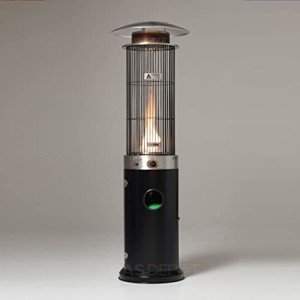Lowering the Price of Patio Gas
Patio gas is an liquid petroleum (LPG) used in patio heaters and BBQs. It is available in small 'patio bottles' that are designed to work with regulators, making it easy to connect them to your BBQ.
It has a low boiling point so it can be stored outside all year round and is extremely efficient in hot temperatures.
Cost of Gas
Patio gas is a form of propane or butane used to heat outdoor barbecues and outdoor heating. It is usually delivered in an enormous propane or butane bottle that has an on-clip regulator. This kind of gas is less than natural gas which is delivered via pipes. However, the cost of constructing or repairing gas lines will depend on the type and material of pipe.
Propane can also be bought in smaller cylinders that are compatible with BBQs and patio heaters. These cylinders are filled by any propane dealer. They come with a clip-on or screw-on regulator with a diameter of 27mm.
Bottles Cost
There are many ways to reduce the cost of patio gas. For one, be sure to purchase your bottles in the early morning or late evening in the evening, when prices tend to be lower. Make sure to fill your tank of gas when it's cool outside. Hot temperatures cause the fuel to expand and you will pay more for fuel that is less.
You can also save money by using recycled bottles instead of plastic ones. Popular choices include the Glaceau Smartwater, which is known for its feathery weight and easy-to-drink flip cap as well as the Black Diamond Ultralight, which is beloved by thru-hikers for its narrow shape and its light, easy-to-refill design.
The Calor Patio (propane gas) is a cylinder that weighs 13kg and is perfect for patio heaters, BBQs with four burners or more. The price includes both the cylinder as well as the valve. Add EUR20 if you are purchasing your first cylinder and do not have a bottle of returnable alcohol.
Cost of Regulators

There are a variety of gas regulators that are suitable for use on patios. But, they're not all identical. You'll need a regulator compatible with the type of cylinder you're using. A propane cylinder, as an example has an entirely different valve than a butane one. Both types of gas require different pressures to be released, so they are not interchangeable without swapping the regulator.
There are different styles of regulators too with clip-on and screw-on models. Some include a pressure setting, a restrictor and a sensor all in one body, while others are more complex and could include several different components. The type of cylinder you're using can impact the price of the regulator. The smallest bottles are available in different sizes, but larger cylinders will cost more and require a larger regulator. small gas patio heater of a gas line is higher when your patio heater is powered by natural gas. You will also need to include the cost of the general contractor, as well as any inspection or permit fees that are required by the local authority.
Cost of Installation
The cost to install gas in your patio will depend on the system and the size of pipe involved. For example, installing the gas line from the main to the home typically costs around $20 per linear foot. This price includes the cost to lay pipes and connect appliances to the line. It also covers the cost of building materials such as steel and copper pipes that are more expensive than plastic pipes. You should anticipate spending an additional $50 to get a gas leak inspection.
You can buy propane or butane in a tiny "patio" bottle that is designed for patio heaters and BBQs. Its design is designed to work with the gas regulator that connects to a barbecue or the cylinder of a patio heater. Propane has a color of orange and Butane is blue, but both work equally well for outdoor leisure use. Calor offers propane, patio gas, and butane LPG cylinders of various sizes. However the bottles aren't interchangeable. Each one has its own unique gas regulator.
The gas regulator controls the pressure at the point that gas is released from the cylinder. This is crucial because it prevents the gas from rising to dangerous levels and leading to an explosion. Gas regulators come in a variety of sizes and styles. These include clip-on and screw-on models. You'll need a separate gas regulator for your patio heater or barbecue since different cylinders require different amounts of gas and release the gas at different pressure levels.
A gas regulator is a vital element in any gas appliance since it allows you to regulate the flow of gas and ensures that the device is safe for use. The majority of regulators are screw-on connections which make it easy to connect the cylinder. You can buy them at a variety of hardware stores. However, you can rent a gas regulator through the majority of rental companies at an hourly fee.
The cost of installing gas lines is dependent on a variety of factors, including the length and location of the pipe, the price of the materials and the complexity of the installation. Installing gas lines to a grill, for instance, generally costs $20 to $25 per linear foot. This cost may increase in the event of constructing a pergola, gazebo or other structure that requires anchor bolts in order to hold it in place. The cost of trenching and excavation adds to the cost of this project.
